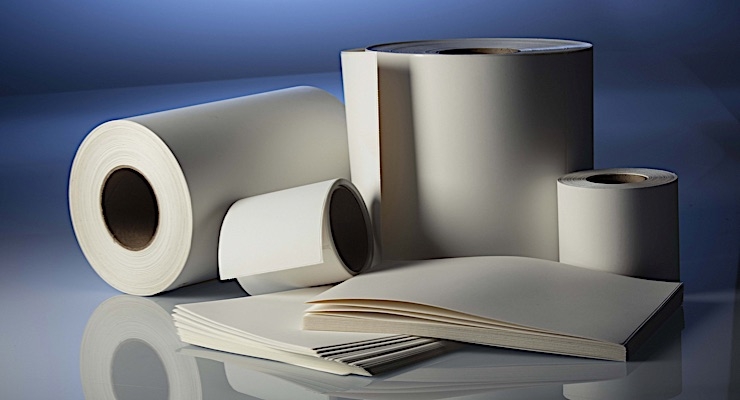
Changes in the paper industry have played an essential role in our daily life and have been around for many years now. Without paper, you cannot think about planning scripts, writing, printing, or packaging. There have been many types of papers, but 7 of them are most commonly used- repro paper also known as offset, coated paper, printing paper, newsprint, cardboard, tissue paper, paperboard, fine art paper. Also, there is a new paper type that emerged, which is called Synthetic.
So without wasting any time, let’s dive deep to look at how this new form has emerged.
What is Synthetic Paper?
As of now, there is no specific interpretation of synthetic paper. It is a hybrid product made using synthetic resin crafted from petroleum products as its crucial material. Certainly, this has given its attributes to plastic film, but it looks more like normal paper created from wood pulps. Some synthetic papers also indicate characteristics related to regular paper and white & opaque in the display based on its engineering. Though, the syntactic paper has unique properties as it distinct and crafted of polyester. Anyone can utilize it for the variability of purposes.
It is offered in different standard sizes that comprise 8.5″ x 14″, 8.5″ x 11″, 13″ x 19″, 12” x 18” 11″ x 17″. Thicknesses comprise 4.7 mil (155 gsm), 3.7 mil (125 gsm), 5.7 mil (198 gsm), 10.7 mil (368 gsm), 7.7 mil (258 gsm), 13.7 mil (510 gsm).
Below are some of the features of Synthetic Paper:
- Water resistance,
- Non – tearable,
- Dimensionally stable,
- Resistant to Lubricant,
- Excellent Printability,
- Exceptional folding quality,
- Environmental-friendly,
- More excellent tear and tensile strength,
- Writeable with Oil-based pens and Wooden Pencils,
- Easy to print by usual screen and offset printing processes,
- It can be stapled, folded, sheeted, stamped, serrated, die-punched, and adhesive bond elements.
Applications of Synthetic Paper
Synthetic paper is becoming known in the industry as it is used in many established printing establishments. This is because of its quick adoption in the packaging and printing space. Synthetic paper has a function in various uses, so now perceive its purposes.
Packaging and labeling
Numerous industries like food, beverages, retail, pharmaceuticals and medical improved Synthetic papers because of their different aspects and use for different applications, mainly labeling, printing and packaging. These factors like non-tear, printability, wet proof and long-lasting effects are excellent products to take on these marketplace-oriented products. E.g., banners, dangler, glass bottle labels, POP graphics, pictures, indoor billboards, Clothing tags, backlit displays, luggage tags, food labels and agriculture labels.
Easiness of Printing
Strong and supporting to higher printing due to these unique qualities, several manufacturers leverage the chance to create extensive-term employed goods, life-long water-resistant, tear-resistant and easy to print.
E.g., Calendars, Charts, maps, menu cards, brochures, children's books, flip charts, Visiting cards, mark sheets, identity cards and legal documents, certificates, Outdoor billboards, backlit and frontlit of displays, airport signage’s and train station.
Usage for Pharmaceutical, Chemical and Agricultural Applications
One more thing which is more interesting about the synthetic paper is secure to manage as it is chemical resistant. These bring about industries like horticulture, medical, chemical taking concentration to usefulness this paper. E.g., Medical labels, chemical drum labels, wristbands for patients, nursery tags, lumber tags and more.
Prospect of Market
There is a growing need for packaging and labeling, which has the primary product of synthetic paper in the marketplace. Thus, if you are working in the paper business or operating a print and production unit, there are no additional paper usages at equivalence with synthetic paper.
Leave a comment:
Your email address will not be published.